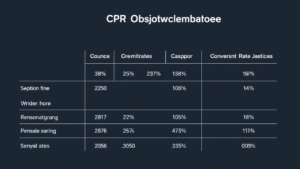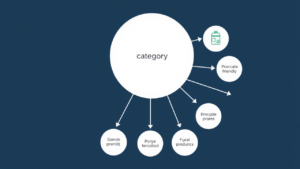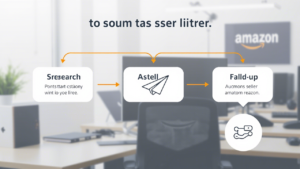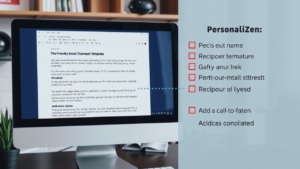So, you’ve decided to dive into the world of Amazon seller lead generation. Great choice! With millions of sellers on Amazon’s platform, there’s no shortage of potential opportunities. But here’s the deal: not all leads are created equal. If you’re not careful, you could waste hours—or even days—chasing the wrong ones.
In this post, we’ll walk you through the top 10 mistakes to avoid when sourcing Amazon seller leads. We’ll also show you how leveraging tools like an Amazon Seller Database can save you time, money, and headaches. Let’s get started!
Skipping Clear Goals: Don’t Start Without a Plan
Imagine setting out on a road trip without knowing where you’re going. Sounds chaotic, right? The same goes for sourcing Amazon seller leads. Without clear goals, you’ll end up chasing every shiny object—and trust me, that’s exhausting.
Here’s what you need to do:
- Decide on product categories (e.g., home goods, electronics).
- Set revenue thresholds (e.g., $500k+ annual sales).
- Identify geographic locations or years in business.
A well-defined profile helps you focus your efforts. For instance, if you’re targeting mid-tier sellers using an Amazon Seller Database, you can filter results based on specific criteria. This saves time and boosts efficiency.
Quick Tip:
Think about your ideal client. What problems do they face? How can you solve them? Write it down before you start sourcing.
Overlooking Data Validation: Public Data Isn’t Enough
Public data is great—but it’s only part of the puzzle. Scouring Amazon’s Best Sellers list or reading reviews won’t give you the full picture. You need deeper insights.
Tools like Jungle Scout, Helium 10, and AMZScout can help. These platforms provide data on estimated sales, traffic, and profit margins. Combine these insights with manual research for validation.
For example:
- Use Keepa to track historical pricing trends.
- Check seller ratings and customer feedback for red flags.
An Amazon Seller Database can simplify this process by aggregating verified data in one place. Spend less time digging and more time connecting.
Ignoring Performance Metrics: Look Beyond the Surface
Would you partner with a seller who has terrible reviews and high return rates? Probably not. Yet many people overlook performance metrics when sourcing leads.
Key metrics to watch include:
- Order Defect Rate (ODR): Should be under 1%.
- Late Shipment Rate: Aim for less than 4%.
- Customer Feedback: Look for consistent praise.
These metrics tell you whether a seller is reliable. Use tools like the Amazon Seller Database to access this info quickly.
Why It Matters:
Sellers with poor performance may harm your reputation if you collaborate with them. Always vet thoroughly.
Sticking to Broad Niches: Go Niche or Go Home
Let’s be honest: broad niches are crowded. If you’re competing against everyone else for the same leads, your message gets lost in the noise.
Instead, focus on niche markets. Smaller niches mean less competition and higher engagement. For example:
- Instead of “electronics,” try “smart home devices.”
- Instead of “clothing,” explore “eco-friendly activewear.”
Pro Tip: Use keyword research tools to identify trending niches. Then, refine your search using an Amazon Seller Database .
Benefits of Niche Targeting:
- Easier to stand out.
- Higher conversion rates.
- Stronger relationships with sellers.
Sending Generic Outreach Messages: Personalization Is Key
Imagine receiving this email:
“Hi, I noticed you sell stuff on Amazon. Want to work together?”
Yikes. That’s a recipe for the trash folder. Personalization is crucial. Tailor your messages to each seller by referencing their products, achievements, or pain points.
Here’s a quick formula:
- Start with a compliment about their business.
- Highlight a challenge they might face.
- Explain how you can help solve it.

Using Unverified Contact Info: Accuracy Matters
There’s nothing worse than sending emails to dead ends. Yet so many people skip the step of verifying contact information. Don’t let this happen to you.
Use tools like Hunter.io or VoilaNorbert to confirm email addresses. Cross-reference multiple sources to ensure accuracy. An Amazon Seller Database can also provide verified contact details.
Quick Checklist for Verification:
- Does the domain match the company name?
- Is the email format consistent with other employees’ emails?
- Have you tested the email address?
Validated contacts = higher response rates.
Overlooking Mid-Tier Sellers: Size Doesn’t Always Matter
High-revenue sellers may seem like the holy grail, but they’re often overwhelmed with offers. Mid-tier sellers, on the other hand, are more likely to engage.
Why? They’re still growing and actively seeking solutions to scale. A balanced approach works best. Mix small, medium, and large sellers in your pipeline.
Example:
A mid-tier seller making 10M giant. Use an Amazon Seller Database to find these hidden gems.
Underestimating the Competition: Stand Out or Get Lost
You’re not the only one reaching out to Amazon sellers. Your competitors are out there, too. To stand out, highlight what makes your offer unique.
Ask yourself:
- What problem do you solve better than anyone else?
- Do you offer competitive pricing or superior support?
Differentiation is key. Make sure your value proposition shines through.
Competitive Edge Checklist
Failing to Follow Up: Persistence Pays Off
One email isn’t enough. Most sellers won’t respond right away, but that doesn’t mean they’re not interested. Persistence pays off.
Create a follow-up schedule:
- First reminder: 3–5 days later.
- Second reminder: 7–10 days after the first one.
- Final attempt: 2 weeks later, adding fresh insights or testimonials.
Each follow-up should add value. For example, share a case study or highlight recent successes. Tools like HubSpot or Pipedrive can automate reminders while keeping things personal.
Pro Tip: Don’t overdo it. Three follow-ups are usually enough. After that, move on to new leads.

Skipping Campaign Tracking: Measure What Matters
If you’re not tracking your outreach efforts, you’re flying blind. How will you know which strategies work and which don’t? Spoiler alert: You won’t.
Start by setting up a CRM system. Track metrics like:
- Open rates
- Response rates
- Conversion rates
Here’s an example table to visualize your progress:
Regularly review your data to spot trends. Are certain subject lines performing better? Adjust accordingly. Leveraging an Amazon Seller Database alongside your CRM can streamline this process.
Conclusion:
Sourcing Amazon seller leads doesn’t have to feel overwhelming. By avoiding these top 10 mistakes, you’ll save time, build stronger relationships, and achieve better results. Remember, success comes down to preparation, persistence, and leveraging the right tools like an Amazon Seller Database.
Ready to take the next step? Start by auditing your current strategy. What areas need improvement? Which tools could enhance your workflow? Small changes can lead to big wins.
FAQs
Q1: What is an Amazon Seller Database?
An Amazon Seller Database is a tool that aggregates data on Amazon sellers, including contact info, sales performance, and product listings. It helps businesses identify potential leads efficiently.
Q2: How do I choose the right niche?
Start by researching trending keywords and subcategories. Use tools like Google Trends or Helium 10 to identify growing niches. Then, validate demand using an Amazon Seller Database.
Q3: How many follow-ups should I send?
Three follow-ups are ideal. Any more than that risks coming across as pushy. Always add value in each message.



